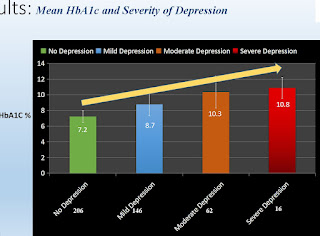Association of C-peptide level with peripheral neuropathy in type 2 diabetes: An observational cross-sectional preliminary study Umaid Potaliya, Sandeep Tak, Manish Goyal Diabetes & Metabolic Syndrome: Clinical Research & Reviews, Volume 17, Issue 2, 2023, 102725, ISSN 1871-4021, https://doi.org/10.1016/j.dsx.2023.102725. https://www.sciencedirect.com/science/article/pii/S1871402123000218 Abstract: Backround and aims Peripheral neuropathy is the most common microvascular complication of diabetes mellitus. In subjects with type 1 diabetes (T1D) relationship of C-peptide levels and neuropathy has been observed in several studies, however, there are very few studies in type 2 diabetes (T2D) subjects. In this study we aim to assess the association of C-peptide levels with peripheral neuropathy in Indian subjects with T2D. Method One hundred patients of T2D were included in this study. Clinical and laboratory parameter was assessed for all participants. The C-peptide lev...
Posts
- Get link
- X
- Other Apps
Early-Onset Type 2 Diabetes, and Mood, Anxiety, and Stress-Related Disorders Prevalence of type 2 diabetes (T2D) has been on rise for decades, and so is trend for patients getting it at younger age. The earlier onset of T2D is more challenging for patients as well as healthcare providers. The prevalence of psychiatric disorder is known to be higher in T2D subjects however, its prevalence in early-onset T2D is not well studied. Also T2D and psychiatric illnesses are know to cluster in family and close relatives. In an interesting population-based cohort study done by Liu et al 1, that included individuals born in Sweden during 1968–1998. They identified pairs of full siblings, half-siblings, cousins and obtained information on diagnoses of early-onset T2D (< 45 years age) and mood disorders ( unipolar depression/ bipolar disorder), anxiety, and stress-related disorders from the National Patient Register. In this study over 3 million ...
How to increase muscle mass and achieve lean body .
- Get link
- X
- Other Apps
There are a few key things you can do to achieve a lean body and increase muscle mass: Eat enough protein: Protein is the building block of muscle, so it's important to consume enough of it in your diet. Aim for 0.7-1 gram of protein per pound of body weight. Incorporate strength training: In order to build muscle, you need to stimulate muscle growth through strength training exercises like lifting weights or using resistance bands. Get enough rest: It's important to allow your muscles time to recover after a workout. Aim for at least 7-9 hours of sleep per night. Stay hydrated: Drinking enough water is important for maintaining overall health and can also help with muscle recovery. Eat enough calories: In order to build muscle, you need to consume more calories than your body burns. However, be sure to choose nutrient-dense foods rather than empty calories. Be consistent: Building muscle and achieving a lean body takes time and requires consistent effort. Stick to a regular ...
- Get link
- X
- Other Apps

Diabetes and Depression, topic of my talk @Rssdi_official Research Retreat at Pune. A brief summary. Psychiatric disorders and psychological problems are common in patients with chronic illness. Depressive symptoms and major depressive disorder are 2X in individuals with T2DM*. Psychological morbidity makes management of T2DM difficult and more challenging. Depression is very common in Indian patients with T2DM. Deprssion and Diabetes creates a vicious cycle. Screening for depression is essential for early intervention.
- Get link
- X
- Other Apps
COVID-19 and Diabetes Patients with Diabetes are more prone to get symptomatic COVD-19 infection. Patients with Diabetes are also 3 times more likely to have severe C ovid-19 as compared to patients without Diabetes. Patients with previous good glucose control is likely to have a severe COVID-19 infection. https://care.diabetesjournals.org/content/early/2020/12/01/dc20-2260